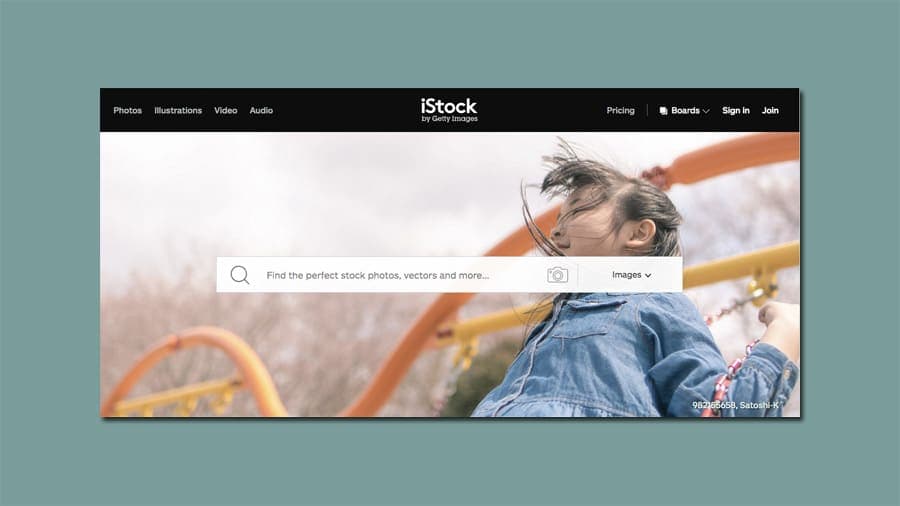
Making Money with Stock Photography
Just about every photographer looking for extra money has considered stock photography, but can you actually make money with it? Find out here!
Business Guides | Learn | Stock Photography | By Teryani Riggs | Last Updated: February 18, 2024
If you’re a photographer looking to make a bit more money, you’ve probably been tempted, at least at some point, to go into stock photography.
Maybe you were hoping to be able to do something with the hundreds of unused photos lurking about on various hard drives. Or maybe the idea of having someone else sell your photos was appealing.
Or perhaps you’ve seen a number of stock photos and said to yourself, “I could do better than that!”
…or maybe you wanted to learn more about how to sell photos online and make money.
The first thing I have to tell you is it’s not quite so easy. Not impossible, the way some blogs and long time stock photographers would make it sound, but not quite a walk in the park either (at least for most people).
The web is full of comments like “Don’t quit your day job!” sitting side-by-side with “I make $1000s a month in stock photography and you can too!” Which is true? Well, arguments can be made for both.
Can you make real money off of stock photography? Possibly.
Can you just upload all your photos that are just taking up space on your hard drives and make money? Probably not – unless those photos are over-the-moon fantastic and meet the current needs of today’s stock photography buyers.
If you’re serious about learning how to make money with pictures, you need to learn the art of making the stock photography business work for you.
The competition is fierce… but it’s possible to generate a realistic income from stock photography.
So once you’ve dialled in your photography pricing for your core business, read on to find out how to make some cash on the side by selling stock photos.
Stock Photography | What is It?

Getty Images is one of the most longstanding traditional macrostock companies.
Stock photography is simply a term for generic imagery that buyers use for the visual content in everything from news stories, blogs and websites, to design materials for ads or promotional materials.
It’s much cheaper than hiring a photographer and is generally sold through a platform that specializes in keeping a large library full of such images so that buyers have a number of different options to choose from.
At this point, you must be thinking what are stock pictures? And how are they different from commercial photography for a client.
Think of stock pictures as the opposite of custom-made photographs, which are licensed directly to a client (depending on copyright status) and are original works created specifically for that client’s purpose.
For example, if I needed a high-quality image of a happy family eating dinner together, hiring a photographer to find all of the models and put together the food, props, and lighting would be quite expensive.
Side note: using a service like Model Mayhem would be your best bet for finding a ‘talent’.
It would be far easier and cheaper to find one on a stock photography site and pay anywhere from a few cents to a few dollars.
Types of Stock Photography
There are three types of stock photography, but most people focus on macrostock and microstock.
- Macrostock
Macrostock photography, also known as “traditional stock photography” refers to agencies that sell high-priced and exclusive images. These agencies license the individual images directly to the client and sell the images for between $30-$3000 a year. The photographer then gets royalties.
The most well known macrostock agency at the moment is Getty Images, but any company that sells RM or “rights managed” images qualifies.
How Much Do You REALLY Know About Photography?! 🤔
Test your photography knowledge with this quick quiz!
See how much you really know about photography...

- Microstock
Microctock, on the other hand, sells images for much less (usually from around 20¢ to $10) and on a royalty-free basis. The photographers get get no royalties, but get paid per image download instead – usually at the end of each month.
Companies such as Shutterstock, iStock, Depositphotos, and Dreamstime are all well-established microstock agencies.
In this article we’ll be talking mostly about microstock, which is the easiest entry-level stock photography to get into.
Stock Photography | What’s in it for You?
There are a number of reasons getting into stock photography is quite alluring:
- Anyone with high-quality photos to upload can get in
- You don’t need to have a strong portfolio (see: how many photos should you have in a Portfolio)
- You can decide how much time you want to devote to it – whether you want to make it a part time gig or a full-time enterprise
- You have full creative control over what you do
- While you can never ride forever on the images you upload, it can provide a largely passive income once you get to a certain point
- The portfolio you build making stock photography can later be used to secure more traditional freelance photography jobs
Basically, if you’re creative and really want to make money through photography, stock photography can be a great way to make some additional income.
Also, thanks to the proliferation of apps to sell photos online, you can now make money via your pictures whenever you have WiFi, on your mobile devices as well as on your desktop.
However, learning how to sell stock photos is complex if you want to be successful and earn a decent income from sales.
Can you Make Money with Stock Photography?
Now, you may ask: Is selling stock photos profitable? Yes, making money from stock photos is possible. While there are plenty of stock photographers who make a decent living, there are easily as many more who do not.
Things have changed dramatically in the 15 or more years microstock has been available.
In the early days, it used to be much easier to earn enough income to live off. There weren’t as many images out there and the market wasn’t saturated with photographers.
These days, however, the industry’s matured and the supply of images is vastly outpacing demand.
Shutterstock alone now has over 225 million images with over 1 million more added every week. This means that to succeed, contributors have to work harder and smarter than they did say, 15 years ago when microstock was just starting.
The good news is that, while you might not make a full time living off it, it’s generally not too difficult to get up to a place of earning a few hundred dollars a month.
It’ll take a while (unless you’re incredibly lucky) and you’ll need to upload a lot of images, but with a bit of perseverance and dedication, $200-$500 a month is definitely doable.
How Much can you Earn as a Stock Photographer?

Making money with stock photography is definitely possible. Image: My Stock Photo
Wondering how to make money selling jpegs? Unsure how much can you make selling stock photos? On his blog mystockphoto.com photographer Alexandre Rotenberg writes that to earn a $500/month passive income, you’ll need to have uploaded at least 6,000 images.
(This assumes that you’re uploading high-quality commercial images of a variety of subjects within your niche and that everything’s been keyworded correctly.)
How long does it take to upload 6,000 high-quality non-similar images? Well, if you work full time and have a family, 200 images a month will probably be a bit much.
With focus, you could probably manage 100 images a month. Fifty is certainly quite doable. (Less than that and this probably isn’t the line of work for you.)
At 100 images a month it would take you five years to reach Rotenberg’s 6000 images mark (which he goes on to state is a minimum). If you increase the value of your images by including models with model releases and/or really push your niche, you could probably do it in just under three years. I know photographers who’ve managed to get $200-$300 passive income in just two years.
Either way, it’s not a get rich quickly scheme. Stock photography income takes a while to be sustainable. Most photographers will need at least three years to get to that level and if you’re a busy bee, you’ll need the full five.
Of course, there are some photographers who get lucky in that their niche happens to be in wide demand or they’re traveling all the time and can take amazing images of places that haven’t yet been blown out of the market.
In general though, expect a long haul before you can get up to a substantial income.
Challenges of being a Stock Photographer

The ‘high five’ shot is a popular one for stock photographers. Image: Raw Pixel
The truth is, many would-be contributors quit within the first six months. The reasons are many, but usually come down to the fact that they didn’t see enough of a return during those first few months. It’s not easy to sell stock photography.
Often this is due to image quality, but not always. There’s also the issue that you’re competing against thousands of other contributors and 15 years of stock already on the table. Add to the fact that it really takes dedication to upload 100 images per month, all correctly keyworded – especially if you do it by hand as I did when I first started.
Also, creating unique content in any overly saturated market takes a lot of creativity. Plus, your content needs to be marketable (something that someone would currently want to buy – ideally a business), and that’s not quite as easy as it seems.
…or at least, not as easy as many “Make Money by Selling You Images as Stock Photography” posts would have it seem.
Suffice it to say that if you’re just looking to offload your unused photos to a site and hope they’ll sell, you probably won’t make any money.
Like anything else, stock photography is a business, and in this business you need to produce original content that buyers are looking for, not just your typical stock photo cliche shots.
If you have a knack for that or are willing to study the trends and learn to create it, then you have a good chance at succeeding (with a lot of hard work, of course).
Not deterred yet? Then read on!
How to Make Stock Photography Work for You

Using sites like Google Trends to understand the current trends will help you create images that sell.
The first and foremost thing to keep in mind to be successful in the stock photography world is that you need to be willing to shoot stock photography.
I know that sounds redundant, but you’d be surprised at how many people don’t really know what that means.
“Stock” photography doesn’t mean simply uploading all your unused photos to a microstock site and hoping they’ll sell. Far from it, in fact.
Sure, shots in the dark can once in a while hit their mark, but that’s pretty rare. To truly be successful in this business, you need to know your target, take aim, and fire.
In other words, you need to operate as a business.
Producing marketable stock images means researching the markets and current trends. It means taking the time to see what’s currently selling or what holidays are coming up and making/capturing images accordingly.
The highest earning microstock photographers plan their shoots carefully, often using models and props or traveling specifically to places or events that they know will be in high demand.
They pay attention to the forums and the sites requests for new photos. They spend time looking through stock libraries to see what’s missing and create photos accordingly.
“How much money can you make selling photos online?” I hear you ask. The short answer is it depends. There are many platforms online and they all have very different pricing schemes.
3 Practical Tips for Stock Photography

Drone stock photos are usually in high demand. Image: See from the Sky
As important as research and planning are, they’re just a piece of the microstock success pie. Here are the other slices you’ll need to keep in mind:
1. Keywording
How to make money from stock photos is highly dependent on their visibility. One major way to achieve this is through appropriate keywords. Keywords are the primary way prospective buyers find your images, and as such they’re extremely important. That means it’s important to get it right.
Here are a few tips on keywording for stock photography for beginners:
Make your keywords as descriptive as possible. Depending on the microstock agency you’re working with, it may be important to list them in order of importance.
For example, you’ll want to place the more specific keyword “cat” in front of the more generic “animal.” Basically, the more specific, the better.
You’ll also need to indicate whether there are one or more of the subjects in the shot (i.e. “cat” vs. “cats”), include any objects that are in the image, and list actions such as “running” or “jumping.” If your image illustrates a concept such as “teamwork” or “hope,” be sure to include those as well.
Some platforms like Adobe Stock offer an auto keyword tool that works pretty well, but don’t rely on it. It’s best to do due diligence and make sure you’re not missing any key words and to arrange them in order of relevance.
Thankfully there are some great keywording tools out there that make this process easier. I’ll get to those at the end of this post.
2. Always Keep the End user in Mind
To sell your photos you need to have something end users want. Bloggers, marketing agencies, businesses, or magazines, the end users determine what sells – literally.
What are they looking for? Image content that helps illustrate concepts and/or complements the content they’re creating. This can be just about everything and anything, but some things are in higher demand than others.
For example, businesses are often needing images that illustrate concepts like “family,” “teamwork,” and “trust.” The more images you can put together bring these kinds of concepts to life, the more sales you can make.

Businesses are often needing images that illustrate the concepts of teamwork and collaboration.
People creating websites or advertisements often need images with a lot of negative (empty) space where they can put text… and so on.
This translates into three key questions:
- Who is going to want to buy this?
- What will they use it for?
- How are they going to use it?
If you compose your images with these in mind, you’ll have a far better chance of selling.
3. Upload Regularly
How to make money on stock photos also depends on the frequency of your uploads. Uploading regularly is important for a number of reasons. First of all, the more photos you have out there, the better your chances of making a sale.
Second, it keeps your images up front and center in the search results of most platforms.
Third, trends change and many images that will be popular one year won’t be so “in” a few years later.
So what about this promise of passive income? Well, it does exist. For example, once you reach $500 per month, chances are you’ll stay there… for a little while at least.
If you don’t keep uploading new content however, you’ll find that amount dropping as the months go on.
If you go a full year without new uploads, you’ll probably go down to around $300/month, which for some is still a great passive income. For others, not so much.
So in general, if you want to avoid time decay, you’ll need to keep uploading new high-quality content. This will keep you’re images more findable in current searches and also help keep them relevant to changing trends.
This doesn’t mean your old photos won’t sell – there are many buyers looking for photos that were popular years ago – but you’ll sell better by keeping your content fresh. If you’re on a stock site that features new photos in a separate category, all the better.
Ultimately, when you upload regularly, you can definitely make stock photos passive income generators.
- Read more: 15 Ways to Make Money with your Drone
Stock Photography | What to Shoot?

Images with people in them sell better, especially when you’ve obtained a model release.
So you’ve decided to go for it. You’ve registered with one or more stock agencies and you’re ready to begin shooting stock photography. What should you start with?
If you check with the various sites that report on stock photos sales, you’ll notice that there’s not just one kind of photo that sells – luckily for us!
That being said, there still are a number of things they have in common, and these tend to go in trends.
Fortunately, figuring out the current and future trends is a big business on the net, and just about any of the big image sites cover them in their blog.
For example, according to Canva, the trends of 2018 include minimalist composition, pastel colours, powerful women, and cultural diversity.
Stock Photo Secrets predicts that 2019 trends will include vibrant colour, personal technology, social causes, hyper still-life… and so on.
In addition, each site will usually tell you what’s trending. Alamy, Shutterstock, and most others give monthly updates of the photos end users are looking for.
For example, Shutterstock’s Shotlist for March is currently requesting images illustrating mom appreciation, global celebrations, and common work practices. Adobe Stock’s current needs (which they publish quarterly) has a huge list of everything from forests to employee promotions.
Does this mean you need to shoot these topics? Not at all. But being aware of the trends and choosing ones that either perk your interest and/or fit your niche will help your sales considerably.
Speaking of niches…
-
Find Your Niche
If you’re just starting out, you’re probably shooting a wide variety of subjects and if you’re like many people, you probably have a hard drive full of flowers, beaches, sunset, pets, and maybe even flags.
Unfortunately, these very common subjects are, well, common. You’ll find thousands of these types of images on just about every stock photo site imaginable. If you jump the gun and just focus on how to make money selling stock photos without proper research, you’ll have a hard time.

Flat lay photography is still popular among end users
While it might be more fun to throw a wide net, most people who sell pictures for money in stock photography focus on developing certain niches – ideally those that are in demand and that aren’t particularly flooded. The more individual and specific you can be, the easier it is to really hone your craft.
That’s not to say that you can’t be a generalist. It just tends to be easier to sell well if you narrow down your focus and really work at excelling there.
Let’s look at where and how to sell jpegs.
Popular Micro Stock Categories
As noted before, if you look at what’s trending in any particular year, it’s often a wide variety of subjects and styles. That being said, there are some areas that sell better than others.
Here’s a breakdown:
1. Lifestyle

Images featuring people usually require model releases.
Well-done lifestyle images are always in demand. Whether it’s a family sitting down to dinner, someone signing a lease, a kid taking a dog on a walk, parents playing with children or a couple enjoying a stroll on a boardwalk, these types of images sell really well.
Remember Shutterstock’s request for mom appreciation? This falls right into the lifestyle category.
The challenging part is that you’ll need to find models and get model releases for these kinds of images. That can be a bit of a hassle, but the payoff can be well worth it.
2. Nature and Landscapes

You may have an easier time selling your landscape photography if it has a person in it.
This genre is oh-so-popular with photographers but oh-so-challenging to make any money with.
Why? Because everyone likes to shoot this category and there’s a serious glut of strong images already out there. You basically have to be absolutely fantastic to make it in this niche.
3. Business and Industry

Stock Photos that may appear boring to you may actually be in high demand for businesses.
The business and industry (including technology) niche tends to sell well across the board. People in meetings, using their computers, employees working together, all of these are continually in demand.
This is also an easy topic to find a niche in. Just about all of us do some kind of work and/or have access to those doing it.
I read a story about one stock photographer having a top selling photo that she snapped while technicians were installing solar panels on her roof. The right place + the right time + popular tech = good payoff.
4. Travel Photography

One of the benefits of always carrying a camera while on holiday.
The one area where I’ve known people to get lucky most often in is travel photography. (By “get lucky”, I mean sell photos sooner than would be expected.)
If you already travel a lot and you take high-quality photos of places that aren’t overly captured already, odds are you’ll make a sale.
I know a few different people who’ve been able to get their stock photo income up to $200-$300 a year without too much of a headache. It’s not a lot, but since they travel year around on a shoestring, it makes a significant difference.
If you’re dedicated to traveling, why not take a look at the request list on the different stock sites and plan accordingly?
I have friends who plan their trips based on stock photography requests – they travel to a variety of unusual places… and make money doing so.
Alternately you can travel in your home town or bioregion and cover it from different angles. Many stock photographers have made great sales from this strategy.
The only caveat is that you need to get property releases for any private property you capture, unless you’re planning to sell it purely as an editorial image.
5. Current News

Photos of protests are always in high demand with news agencies.
“If you want sales, just shoot what is in the news!” – Alexandre Rotenberg of mystockphoto.com
Current news stories can be exceptionally lucrative. In fact, Alamy has a strong enough demand for it that they’ve created a whole separate section for live news coverage with a much less stringent acceptance process.
You don’t have to travel to the big things -simply cover what’s local to you and your region. If something like the Women’s March is within travel distance for you (or you’re already going), then make a point of capturing some excellent images.
6. Holidays

To work in the holiday niche you’ll need to get started months in advance.
One area that almost always sells well is holiday photos. The trick here is to think well ahead – often six months ahead – and then begin uploading a couple of months before the holiday.
Stock photographers who focus on this niche will generally shoot Thanksgiving-themed images early in the year and then have them for sale by summer.
Likewise, with Christmas, they’ll start in the early summer and have them available by August.
Pro Tip: take a lot of photos during the shoot and then upload 10-20 each week, so you can easily stay in the Newest category up until the holiday.
Which Microstock Photography Site is the Best?
These days there are literally dozens of microstock agencies, but only a few will really be worth your time.
[Related: Best Stock Photography Sites]
Most photographers who’ve been around for a while tend to focus first on Shutterstock, Fotolia (now Adobe Stock), iStock (Getty Image’s microstock section), and Alamy. Other ones to consider are Depositphotos and Dreamstime.
Here’s a brief rundown:
Shutterstock
Shutterstock is by far the most popular microstock agency. It serves small and large clients alike, from individual bloggers to large companies.
I even worked for a photography software company that regularly used Shutterstock for its imagery needs.
Part of Shutterstock’s draw for end users is that they have a huge image library of both images and videos, serve over 150 countries, and are some of the most affordable for-purchase sources of stock imagery out there.
But being one of the more low-cost options has its drawbacks to photographers. The payout is rarely more than $0.25 per photo.
Still, with so many users it’s not particularly difficult to make a sale. In fact, many long-time stock photographers claim that Shutterstock still accounts for their best-selling stock photos.
If you want to start your journey earning money through stock photo images, Shutterstock is a good gateway platform.
iStock
iStock, now owned by Getty Images, also doesn’t pay out much (only 15% of an image’s download price), but it’s slightly better than Shutterstock at 20¢ – 50¢ per sale.
Still, the fact that they’re now part of Getty’s immense system means that your photos are potentially available to license on both libraries.
I’ve heard that earnings from iStock tend to fluctuate a lot, but it does well for many contributors I know.
Alamy
Alamy is one of my favorite stock photo sites. Sure, it’s not as massive as Shutterstock or iStock, but they pay a full 50% on each sale.
Sometimes you can make over $50 per image. (I haven’t made quite that much – mine tend to go for $5-$10.)
They also have a much better submission platform than iStock. And while they have pretty stringent image submission standards, I appreciate this. (Maybe because my images always pass?!)
If you’re a live news photographer, Alamy’s probably one of the best platforms out there. They’re also great for selling editorial photos – ones that have people and/or private property in them but you haven’t acquired a release.
Also, because it’s a British stock photo site there are next to no hoops to jump through to join. That and the high commission rate were the things that brought me to them originally.
Dreamstime

A lot of photographers swear by Dreamstime, though it’s not one of my favorites. It tends to pay out somewhere between $0.34 and $2.38 per image sold.
One unusual aspect of Dreamstime is that it’s one of the few platforms that will allow you to submit photos taken with your phone.
One thing I really don’t like about Dreamstime, however, is their submission tool – it’s way too slow for me. If you’re not using an automatic submission tool, it can be agonizing.
Adobe Stock/Fotolia
Fotolia has been around for years and once they were bought out by Adobe, most stock photographers I know found their sales go up.
The pay rates are similar to Shutterstock’s, but slightly higher. Michael Godek on PetaPixel describes it as: “while you might earn pennies on Shutterstock, you can earn dimes on Adobe.”
In Fotolia, you can upload photo stock images and other stock media.
One thing that’s noteworthy about Adobe Stock is that you can easily submit your photos through Lightroom.
That’s a big plus for all of us who do careful keywording and metadata in Lightroom.
Not only that, Adobe software users can buy photos directly through any Adobe platform as well.
Another thing they have going for them is the ease of submission – they make all the other stock companies look like they’re from the Flintstones.
One con to working with Adobe Stock is that they don’t allow any editorial photos. Boo, hiss! If you don’t have a model/property release you’re out of luck. (It’s one reason I prefer Alamy when shooting news stories and protests!)
Luckily you don’t really have to decide between these if you use a submission tool that submits to all the different main sites at once (assuming you didn’t sign up for any exclusive contracts).
Depositphotos
If you’ve looked into stock photography at all, you’ve probably seen Depositphotos out there. They have an aggressive marketing team and seem to be just about everywhere. The folks I know who contribute to them seem to do moderately well.
One thing that can be frustrating about how they operate, though, is their royalty tier structure. You have to sell a lot of photos to move up to the higher levels. And of course, the higher your level, the more you’re getting paid.
For example, their entry-level is “green” at less than 500 uploads. To get to the highest level – platinum – you’ll need to increase that to a whopping 150,000+ uploads!
The pay difference between the two? You’ll get 34% of what the buyer paid for an on-demand photo. At platinum, you’ll get 42%. It goes down for images sold via subscriptions at .30 for green and .35 for platinum.
However, if you’re a portrait photographer, please keep Depositphotos model release requirements in mind while uploading pictures of people.
So why bother? Well, the base royalty of 34% or 30 cents per subscription download is somewhat better than say Shutterstock or iStock. So while you may be stuck on the bottom tiers for quite a while, at least you’re not selling at rock bottom.
Special Tools for Stock Photography
Stock photography’s been around long enough for a couple of pretty cool tools to have been made for us. Here are a few of my favorites:
StockSubmitter
If you plan to submit to a number of non-exclusive microstock sites, then you’ll really want to automate the process. (Trust me, this is a big one.)
StockSubmitter automates all tagging, keywording, and metadata of your photos, and then allows you to upload and submit them to dozens of platforms pretty much simultaneously. It also allows you to track your sales, and approved files. Honestly, it’s a serious time saver!
It works on both Mac and PC, and you can store things online. It allows you to submit up to 33 files a month, which really isn’t enough. So if you’re submitting more (which you should be), you’ll probably find it well worth your while to buy a subscription. (The next level up is about $4.30 for 100 uploads a month.)
Xpiks
If you’re looking for a free, open source keywording and uploading tool, Xpiks shows a lot of promise.
It works across all platforms (Linux included). I haven’t used it yet as I’d already started with StockSubmitter but I hear good things about it.
Qhero
Keywording used to be one of the most laborious aspects to submitting stock photos. These days there are a lot of aids out there, but one of my new favorites is Qhero.
Qhero uses AI to generate keywords and so far for me it’s been pretty accurate. It’s also free to use.
Google Trends
Believe it or not, Google Trends is still incredibly useful for checking to see what people are searching for in the image world.
This can, in turn, inform what subjects you’d like to shoot next. You can also check trending topics by country, which can help with your targeting.
PikWizard
Making Money with Stock Photography | Final Words
Overall, microstock is a great investment if you’re a serious amateur looking to make some extra money.
Like anything, you’ll need a lot of patience, hard work, and perseverance to make it pay off, but once it does, the passive income is quite nice.
The fact that you can choose whether to be part or full time is also quite helpful, especially for folks who have a lot of other projects going on.
Take great photos, do your research, and upload frequently and you should be able to eventually reach the $500/month mark.
What do you think? Is it worth your while? Leave a comment below!

Check out these 8 essential tools to help you succeed as a professional photographer.
Includes limited-time discounts.
Teryani Riggs (they/them) is an adventure, who loves all things wild and free. Teryani can often be found in the midst of a social/eco-justice campaign, hiking through wild backcountry, or hitchhiking around the world listening to other people’s stories. While their focus has historically centered on landscape, travel, and wilderness photography, they’ve also been hired to shoot genres as varied as historical fiction reenactments in the studio to product and food photography.























